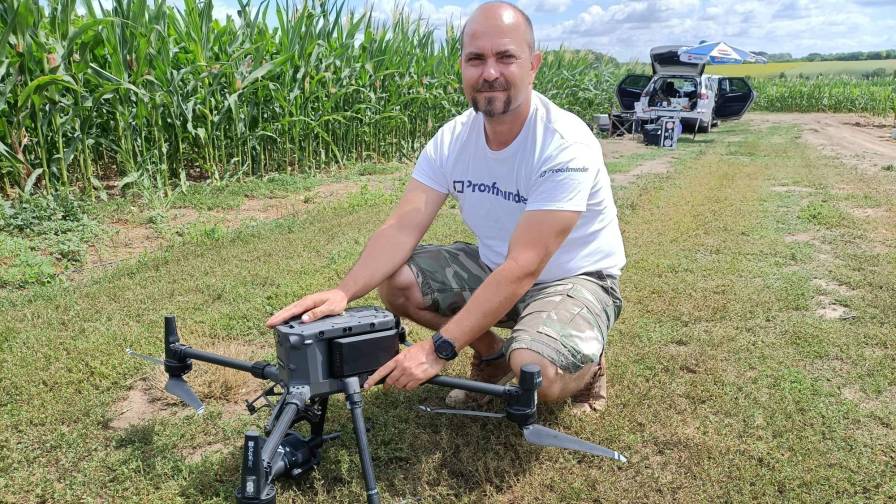Four Ways Remote Monitoring Increases Efficiency in Modern Ag Operations
Agriculture is undergoing a digital transformation in response to challenges it faces including labor shortages, inflation, geopolitical events, water scarcity, and climate change, to name a few. Digitizing agriculture involves leveraging real-time data with technology and digital tools for precision planting, fertilizing, irrigating, maintaining, and harvesting their crops. Farmers can’t rely on historical data, almanacs, or local opinion alone if they want to maximize their yields and profits.
To maximize productivity and profitability, growers must carefully monitor factors affecting overall efficiency, from water-pump performance to fuel economy. Managing the cost and use of inputs, such as water and nutrients, involves close observation and continual recalculation. As opposed to uniformly reducing inputs, modern producers consider the variable conditions among their fields or pastures. Increasingly, growers and producers are turning to technology and “smart” agriculture to accurately plant, fertilize, irrigate, manage, and harvest. Sensors are needed to provide a precise data record about soil temperature, salinity, moisture, and nutrient levels for maximum yields in any given moment in time.
To understand what smart agriculture looks like in practice, it helps to know that “smart” originally was an acronym for Self-Monitoring Analysis and Reporting Technology, meaning that connected sensors monitor and report on the status of “things,” such as a water tank. Software analyzes incoming data and presents it to the farmer via a smartphone or computer. Collectively, those monitoring devices are called the Internet of Things (IoT), and the technology is poised to transform agriculture on a global scale — improving efficiencies not just on individual farms but all across the supply chain. Smart agriculture’s big-picture goal is to drastically increase food production for the world’s burgeoning population while sustaining land use and conserving natural resources.
With remote monitoring, growers and producers can gain real-time visibility of their entire operations to better manage input costs, maximize yields and profitability, and accomplish more with less effort.
MORE BY JEFF HORTON
Ranch Life: How Sensor Technology Is Providing Real-Time Visibility of Water Management Practices
Four Ways Remote Monitoring Maximizes Efficiency
1. Less Time in the Truck
Farm workers cover a lot of ground daily, tending to chores and monitoring the condition of their land and equipment. Water management accounts for a lot of time and mileage. On large operations, for example, workers might drive across thousands of acres of rugged terrain to check water tanks and troughs. With the support of IoT-enabled drop-in sensors, producers can immediately receive notifications on their mobile device and know the status of their water levels in tanks, troughs, aquifers and springs without spending hours each week behind the wheel. Country music lyrics notwithstanding, nobody loves their truck that much. And rolling out fewer trucks means less wear and tear on vehicles, lower fuel costs and fewer man-hours spent on inspections — which contributes to greater profitability.
In the fields, water level sensors can be critical for worker and animal safety. The U.S. Department of Agriculture (USDA), for example, requires ranchers to check on livestock every day. Driving to each site reduces profitability due to rising labor and fuel costs and potentially puts worker safety at risk. According to USDA statistics, nearly half (49 percent) of agriculture fatalities involve transportation.
Some IoT sensors on the market measure water quality, as well, so growers know if they need to treat tank water for harmful pollutants or microorganisms before the contaminants become a potentially deadly threat to plant or animal health.
2. Taking the Guesswork out of Irrigation
Automated irrigation systems make for easier water management, but automation alone doesn’t optimize water use. Water scarcity is a worsening crisis in certain regions. For example, agricultural operations are currently tapping the High Plains aquifer beyond natural replenishment rates, and if that continues, the region will be unable to support irrigation within a couple of decades.
Fortunately, forward-thinking growers and producers are taking action and turning to precision irrigation practices to optimize water use — and it doesn’t require a complete infrastructure overhaul. By adding Wi-Fi-connected monitoring devices to their existing irrigation systems, they can monitor and adjust water use from any location. As growers are well aware, sometimes more water is needed to optimize water-use efficiency per bushel produced, while in other cases, a crop actually achieves its fullest potential using less water. Together with monitors that transmit weather and soil moisture data, IoT-enabled irrigation systems allow farmers to make on-the-go decisions about water application schedules and rates based on actual or expected conditions.
Integrated monitoring systems can measure not only water levels and flow rates but also record the amount of water lost in transit from the point of withdrawal to the point of use. Receiving an immediate alert if a leak is detected allows farmers to fix the problem, perhaps even before it presents an issue.
3. Streamlining Paperwork
Record keeping is essential for farmers who want to manage risk and optimize efficiency. Agriculture generates a lot of paperwork, from tracking expenses to processing payroll. At a minimum, producers must keep records to comply with legal requirements for taxes, restricted chemical use, food safety and traceability standards, and local water-use regulations.
Some producers keep records in a logbook that travels with them in their truck console, but increasingly, farmers are taking, storing, and analyzing information in a digital format accessible by smartphone. Digital record keeping ranges from simple spreadsheets to farm management software or apps, which allow for big-picture and granular analysis of enterprise performance. Accurate and easily accessible records help farmers understand efficiency and productivity levels, and aggregated data can provide insights leading to ever-evolving best practices.
For agricultural operations in the early phases of their digital transformation, simple and inexpensive IoT monitors like those used to track water levels can help them comply with water use regulations and reporting requirements. And with all the IoT data streaming to the same user interface, providers don’t have to consolidate information from dozens of sources, as would be the case with manual inspections.
4. Accelerating Response Time to Adverse Weather
Even the most sensible farmer might contemplate performing a rain dance during times of drought, but farmers are all too keenly aware that no one can control the weather. However, technology can help farmers better prepare for adverse weather events.
Often, climate sensors are the first piece of IoT tech implemented in an agricultural setting. IoT sensors send weather updates and detect current and impending conditions that might threaten operations, including wildfires, wind erosion, soil erosion and flooding. Weather monitoring devices are easy to install and use with minimal training. These all-in-one kits usually include everything a producer needs to receive timely alerts about wind detection, relative humidity, barometric pressure and rainfall while monitoring at a distance of up to 20 miles.
Sustainable agriculture now includes collecting and analyzing data for focused decision-making on what to plant where, the best time to plant and how to prepare for extreme weather conditions that could otherwise wreak havoc on crops.
Greater Prosperity
On farms of the future, virtually every asset will be remotely monitored and controlled using IoT technology. Networked IoT devices will generate hundreds of thousands of crunchable data points per day. A dashboard — or single pane of glass — will present the processed data in various formats to the farmer, who will manage and optimize nearly all aspects of operations through this interface.
As agriculture evolves, data becomes imperative. According to the U.S. Agency for International Development, “Without access to modern farming techniques or machinery, let alone science-based climate and weather data, farmer’s livelihoods hinge precariously on a changing environment that they’re struggling to understand.”
Remote monitoring fills insight gaps, proving once again that farmers continue to do what they have always done well: adapt, measure and prepare for the harvest yet to come.










